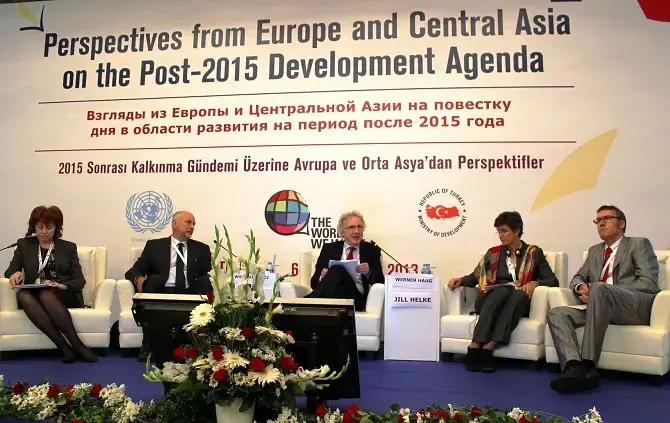By Alanna Armitage
In more and more countries around the world, population numbers are starting to fall, but no region is more affected by this change than Eastern Europe. The latest population projections from the United Nations show this trend clearly: Nine of the world’s ten fastest-shrinking countries are in Eastern Europe. This ranking is led by Bulgaria and Latvia, both of which are expected to lose almost one quarter of their population by 2050. Others are not far behind. If these projections hold true, virtually every country in the region will see its population shrink over the coming decades.
Many people in the region are alarmed by these trends. They worry about how a smaller – and increasingly older – population will affect their country’s economy, and the future of its social systems and vital infrastructure in depopulated areas. They fear a smaller country may be less powerful or influential. Some are worried about their country’s very survival.
At UNFPA, the United Nations Population Fund, we take concerns about the demographic change that is happening in Eastern Europe very seriously. We have decades of experience advising governments on how to manage demographic transitions so that countries emerge stronger and more prosperous. The evidence we have gathered from this region and beyond allows us to distill five key lessons on what to do about shrinking and ageing populations – and turn the demographic change often perceived as a crisis into opportunity:
Low birth rates are only one part of the equation. Much attention is being paid to how to increase birth rates, which are low across Eastern Europe and much of the rest of the continent (Europe’s total fertility rate is 1.6 children per woman). But addressing outmigration is equally important – and in some Eastern European countries arguably even more so. If people continue to go abroad because they can’t find opportunities at home, any potential increase in birth rates will just lead to more emigration, rather than population growth.
Increasing birth rates won’t work without more equality between men and women. In highly developed countries where women are well educated and want to work in paid jobs, any attempt to increase fertility is likely to fail if men don’t share the burden of childcare and household tasks and if employers continue discriminating against women with children. Data shows that countries with strong traditional gender norms – mostly in Eastern and Southern Europe – are also the ones with the lowest birth rates.
Financial incentives alone won’t make people have more children. It seems like an easy fix. However, studies show that giving people money to have more children merely leads to parents having children earlier to cash in the incentive, but doesn’t significantly increase the number of children women have over their lifetime. Financial support for families in need can be an important tool, but should be part of a broader policy package.
People want two children on average, but need the right environment to make that happen. The problem is not that people don’t want more children. The problem is that they often aren’t able to have more. People need support and confidence in their future to be able to realize the family size they desire. This requires better job opportunities, flexible work arrangements, generous family support and parental leave for both parents, affordable quality childcare from early years on, and more equal burden-sharing between men and women.
Building “human capital” helps societies get ready for what’s to come. Across Europe, people live longer and healthier lives. Scientists agree that population ageing is a reality that’s here to stay. Societies need to adapt, and there’s no better way than investing in the health and education of people, starting at the earliest age and continuing throughout the entire life course. This makes sense economically, as a healthy and educated workforce is more productive and innovative. But it also ensures that people stay active and in good health in older age, so they can continue to contribute their valuable skills and experience.
As world leaders prepare to gather in Nairobi in November to celebrate the progress made since the landmark International Conference on Population and Development (ICPD) in Cairo 25 years ago, we must acknowledge the challenges countries with shrinking and ageing populations are facing, and be ready to assist them in finding responses that are forward-looking, make families stronger and respect the rights of each individual.
A regional conference held this week in Sarajevo, Bosnia and Herzegovina, with the participation of governments, experts and civil society is exploring concrete solutions that countries in the region can apply to make the most of the demographic changes they are experiencing.
In change there’s always opportunity. Eastern Europe’s difficulties in enabling people to have the number of children they want is an opportunity to remove the many obstacles young people face in starting a family and, more broadly, in fulfilling their potential. And population ageing is an opportunity to fundamentally rethink the way older people are valued in society.
In today’s world, it is not so much population numbers that matter for a stable and prosperous future. What matters, ultimately, are the health, skills and talents of a society’s people.
Alanna Armitage is the Director of the Regional Office for Eastern Europe and Central Asia of UNFPA, the United Nations Population Fund.




